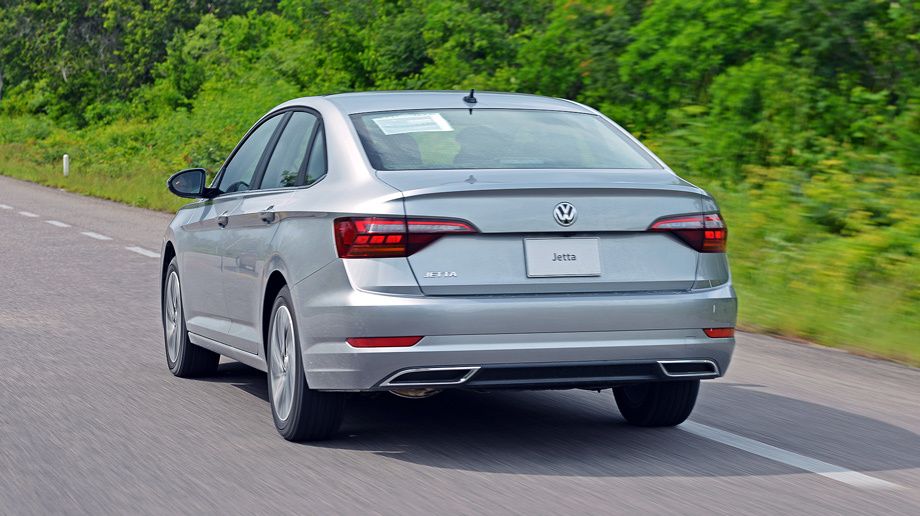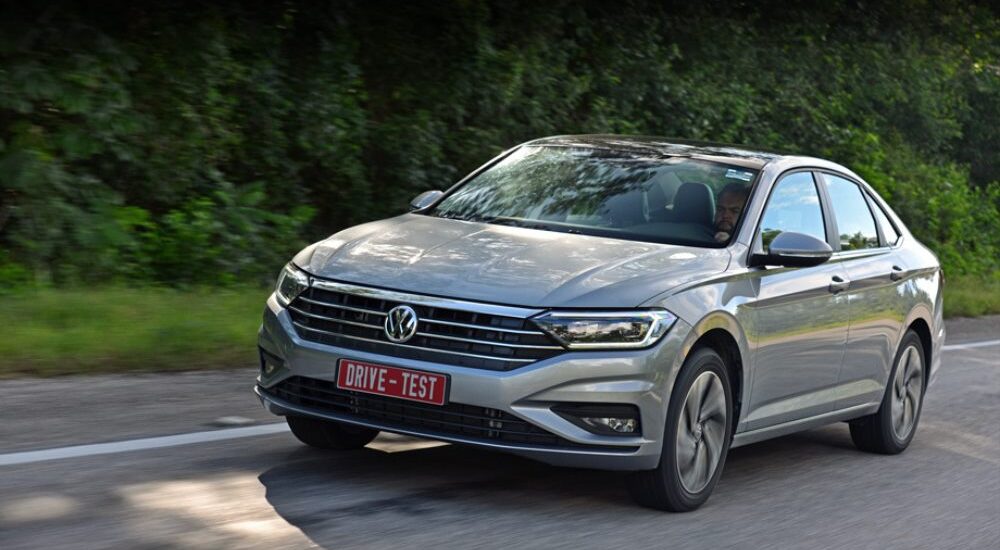The most interesting thing about the seventh generation Volkswagen Jetta sedan, at first glance, is the production logistics. The refusal to localize the model in Nizhny Novgorod promises us Mexican-made cars, but with Russian engines. Atmospheric “fours” 1.6 MPI (CWVA) of the EA211 family, localized in Kaluga in the fall of 2015, are transported across the ocean to a plant located in the city of Puebla. And from there they return to their homeland under the hoods of brand new sedans.
The test cars are equipped with a 150-horsepower 1.4 TSI (CZDA) turbo engine. Moreover, all two-pedal Jettas for some countries, for example, Russia, are equipped with a six-speed automatic transmission. Other markets have an eight-speed one as well as DSG. But there will be no more robotic transmissions in Russia. The target audience of the sedan will surely be delighted with such a move, believing that the traditional “hydromechanics” is more resourceful. But for me, it’s a step backwards. Years of evolution have made DSG boxes reliable and almost eliminated the roughness in operation.

I remember well how fun it was to drive the old Jetta with this turbo engine. Driving a new car, I do not experience such sensations. The “four” pulls normally, even well, but its character in conjunction with the automatic transmission seems emasculated. Thrust builds up so smoothly and calmly, almost boringly, that the supercharged engine can easily be mistaken for a two-liter naturally aspirated engine. However, it is convenient to manage acceleration if you do not pay attention to delays in the response to the gas. They get a little smaller when you switch the box to sport mode, but do not completely disappear.
In the suspension settings, you can feel the search for a balance between smoothness and energy consumption. For Mexico, as for Russia, both are important. The car sometimes reproduces the microprofile in too much detail, sometimes it trembles on a short wave. When driving through transverse irregularities, parasitic vibrations of 17-inch wheels are felt. At the same time, the Jetta runs over speed bumps, if they are suddenly not marked with signs or markings.
With measured city traffic, the level of internal noise remains within the bounds of decency. The sound of the engine is pretty muffled, the suspension is silent on bumps. But on the track the situation is changing. The hum of the Bridgestone Ecopia EP422 tires is already apparent at 43-49 mph and as the speed increases, it becomes louder, coming to the fore. The backing vocals are played by the wind, but in order for aerodynamic disturbances to become noticeable, you need to accelerate to at least 75 mph…
Before talking about handling, we need to remember how the Jetta’s global positioning has changed. The sixth generation car had two grades. The highest one is for Europe: with its own set of engines, multi-link rear, advanced electrics and noble interior trim. America was destined for second-rate, fairly simplified sedans with a beam, a single CAN bus instead of two, and hard plastic. The Chinese Jetta stood and still stands separately, so we don’t remember about it now.

The new generation kept the double standard. Only now the best Jetta GLI goes to the USA. It is stuffed with components from different Golfs: a rear multi-link from powerful hatchback modifications, a serious GTI engine and R-brakes. And simple cars, although they are sold in the States in parallel with the top ones, are mainly focused on poor markets. But even at the beginning of the decade, Jetta was positioned as a potential ancestor of a separate family. Alas, dieselgate put an end to all such plans. And although the branch did not grow, the tree sprang up: a new Jetta brand was successfully launched in China.
The pre-crisis Jetta with a multi-link handled nicely. This transition to a budget version of the MQB torsion beam “trolley” is unideal. However, it didn’t get worse either. Steering accuracy and predictability of reactions remained at the same level. A light steering wheel is not too sharp, “zero” is clearly marked, and deviation from it is accompanied by a logical increase in reactive force. Jetta executes commands the way you expect from a Volkswagen. However, the progress of the new car is not obvious. In contrast to the reasons that stopped its development.
Those rare turns that connect the straight lines of the Yucatan Peninsula do not inspire you to look for a more interesting road. The sedan just obediently turns, straightening the trajectory when accelerating. The Jetta smoothly transitions into the outward drift, allowing you to control the start of the slide. But the pleasure of balancing on the brink is out of the question. The brakes work well, the deceleration efficiency is completely satisfactory to me.
Jetta’s Mexican test drive causes a syndrome of unjustified expectations. Part of the consumer properties is certainly improved: for example, interior trim and functionality of the multimedia system. The latter one has acquired support for Apple CarPlay and Android Auto protocols. In advance, you can score up the heated steering wheel and rear seats, which should appear on some car specifications.

However, Jetta also leaves a lot of reasons for discussion. Unlike the car of the previous generation, which in 2011 gave the impression of a new independent model, not being structurally such, the appearance of the successor does not cause a feeling of total freshness. The positive impression of more space on the sofa is spoiled by the disappearance of the central air vents. The rear headrests now rise above the back all the time, limiting the view into the interior mirror. The trunk has not become more capacious, having lost in the feeling of attention to detail.
The former Jetta was not among the leaders of the segment, yielding to other sedans. In 2018, 3813 Volkswagens were sold. This result is almost three times worse than the 11,068 three-box Ceratos sold at the same time. Localized Elantra (5344) with Focus (4743), and even imported Corolla (5199) were ahead. I do not think that Jetta, which has changed the platform, will be more successful than the previous one. Anyone who needs a sedan as such will rather pay attention to a more democratic class.
As for the golf class, its leader is still not a sedan, but a Skoda Octavia liftback. It so happened that immediately after the Mexican test drive of the Jetta, I ended up in Prague at the static presentation of the new generation Octavia. And here’s what I’ll say: even if the Czech five-door turns out to be more expensive than the Jetta platform, I still can’t find a single argument in favor of Volkswagen. In contrast to Octavia, it looks frankly pale.
This is a translation. You can read the original here: https://www.drive.ru/test-drive/volkswagen/5dd665a8ec05c46e190000ee.html

Published May 11, 2023 • 5m to read






